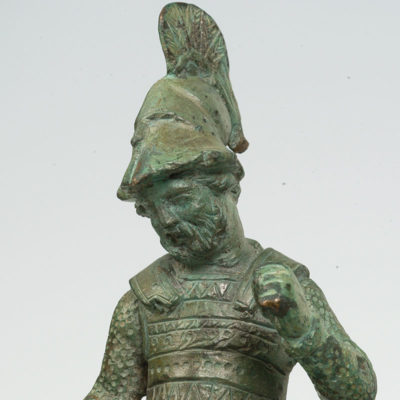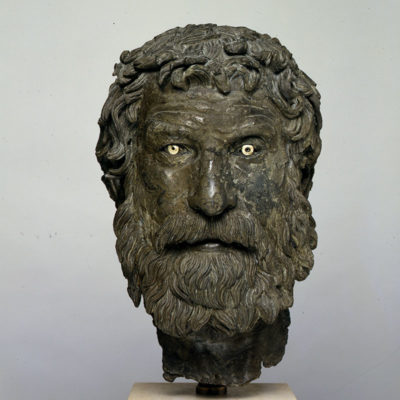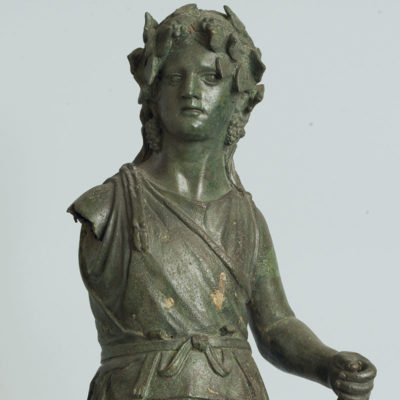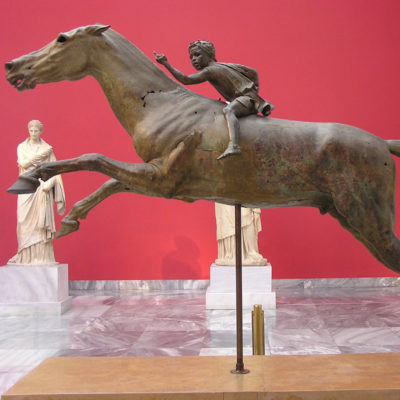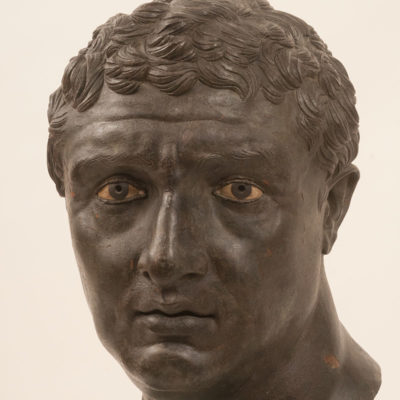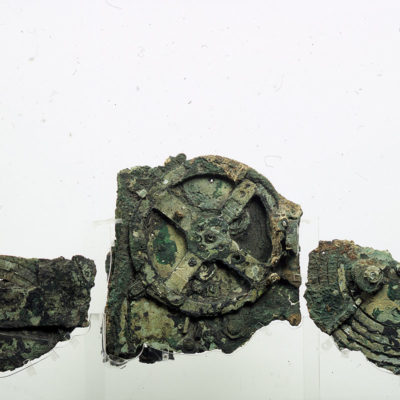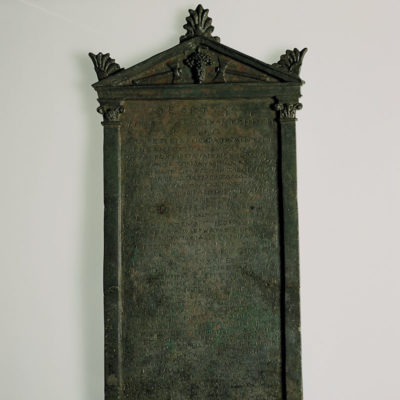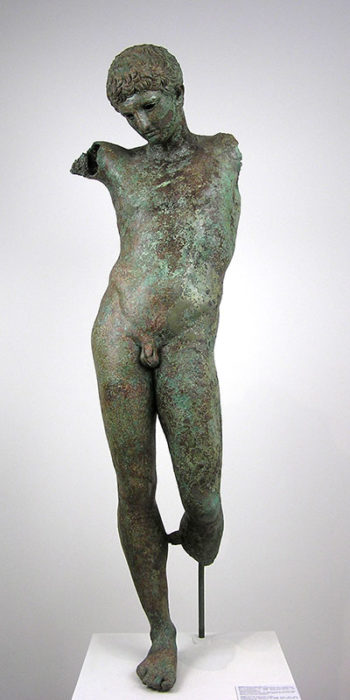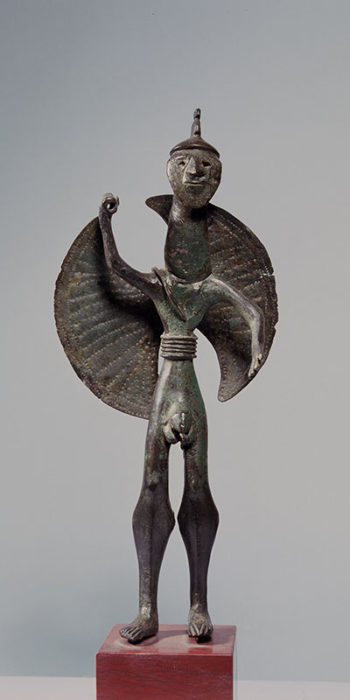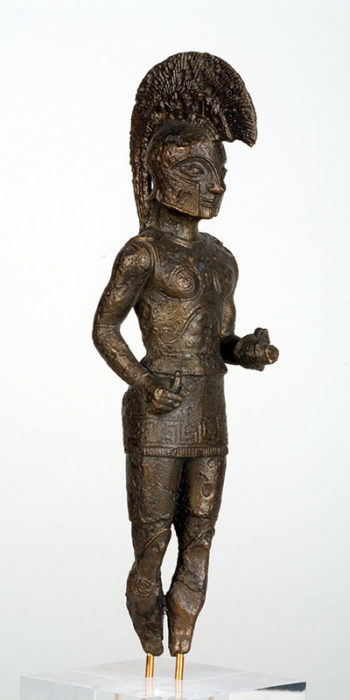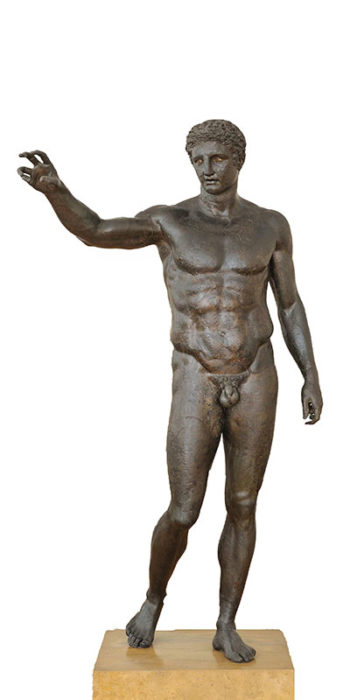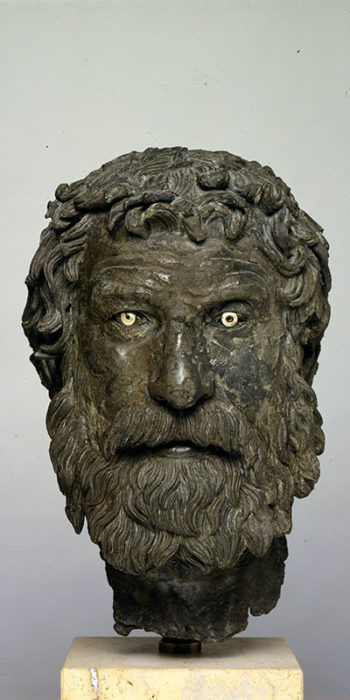Hellenistic Period
During the Hellenistic period, namely from the late 4th c. to 31 BC the arts and culture flourished in the kingdoms of the Diadochi (Successors) and the smaller territories that emerged following the conquests of Alexander the Great.
Most of the workshops that thrived during the Archaic and the Classical period carried on the production of remarkable works of art. Larger or smaller bronze works, in a wide spectrum of themes, individual or arranged in compositions, now decorated public and private spaces, while their dedication to sanctuaries continued. The use of small-scale sculptures in residences brought about an increase in their demand that resulted in the production of large numbers of bronze works. Alexandria in Egypt and also Tarentum in Southern Italy came forth as significant metalworking centres.
The themes include portraits of rulers, sovereigns, generals, deities, athletes, but also figures of common people, often on the fringes of society. The classical types of cult statues are encountered in the sculptures of gods. New cults entailed the import of new types. The works are marked by realism, intensity and passion, whereas the influences from the classical masterpieces of the 5th and the 4th century are evident.
The characteristic works of the period include the group of bronze statuettes that were recovered from the Antikythera shipwreck, works dated to the 2nd c. BC with influences from the classical plastic art. Among the works that comprise the group, the bronze statue of the “Antikythera Philosopher”, of which only the head, the feet and parts of his himation were preserved, holds a prominent position. The male portrait from Delos (X14612) dates back to the same period.
In the 2nd c. BC the victorious Romans engaged in the plundering of artworks from the Greek sanctuaries and the cities which they gradually conquered taking them as booty to the West.


